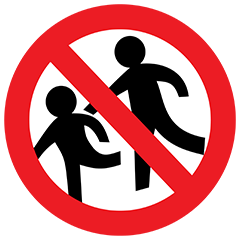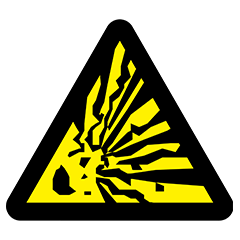Battery Care
Battery Care
Regular inspection and testing as part of your vehicle’s routine maintenance schedule are recommended to maximize battery life and performance. Most battery stores offer free testing service that should be performed whether or not a starting problem has occured.
Regular Inspection
- Use a damp cloth to clean any dirt and grime from the top of the battery. A dirty battery can result in abnormal discharge across the dirt on the top of the battery cover. Do no use a dry cloth due to risk of static electricity discharge. Do not use any chemicals, solvents, or detergents to clean the battery.
- Check the battery terminals, screws and retaining brackets are secure, tight and free of corrosion. Inspect the battery cables for signs of damage or breakage.
- Inspect the battery casing for signs of damage, warpage or bulging. A warped or bulging battery case is a sign that the battery has been overheated or overcharged.
- Use the built-in indicator to check the charge status of the battery. If the status indicator is red to indicate “Replace Battery” then the battery should be replaced immediately even if the battery can still start the engine.

- If the vehicle is not used for an extended period of time, or the battery is to be stored long term, fully recharge the battery prior to storing. Use a good quality multimeter to check the battery voltage at least once every 3 months and recharge if the battery voltage drops below 12.45 volts.
Health & Safety

Refer to the Instruction Manual. Always follow the instructions contained in this manual & those provided in your vehicle owner's manual.

Wear Eye Protection. Shield eyes, face & wear protective gloves when handling this battery.

Keep out of Reach of Children. Incorrect use of this battery may result in explosion or acid leak resulting in serious injury.

In case of contact with eyes, skin or mouth seek medical attention immediately. If contact with eyes immediately flush continuously with running water. If swallowed immediately rinse mouth with water. Do not induce vomiting - give a glass of water. If contact with skin immediately rinse body and clothes with running water.

No Open Flame. Keep away from sparks, flames & lit cigarettes. Do not short circuit battery terminals.

Corrosive Substance. Electrolyte contains sulfuric acid that can cause blindness and serious injury. Do not contact with skin, eyes or clothing.

Explosive Material. Highly explosive hydrogen and oxygen gases produced when charging.

Do not connect electrical equipment directly to the battery. Risk of melted cable and fire. Do not tip the battery. Immediately stop using the battery if it emits an unusual smell, leaks electrolyte, shows signs of deformation, or otherwise appears abnormal.
Battery Charging
There are many different types of automotive battery charges available with varying levels of performance. AUTOBACS recommends using a constant potential charger or the latest generation smart chargers. Regardless of the type of charger, always follows the safety instructions provided and charge in a well-ventilated area.
- Check and confirm there are no signs of damage on the battery. Wear eye protection and protective gloves. If the battery is to be removed from the car for charging, be aware battery is heavy and take care when lifting to keep upright.
- Ensure the battery is charged in a well-ventilated area and follow the instructions detailed in the battery charger owner’s manual.
- Place the battery charger away from the battery to be charged. Battery charger must be connected to the battery before it is connected to the AC wall outlet.
- With battery charger switched OFF, and AC cord removed from wall outlet, first connect the Positive (+) battery terminal then connect the Negative (-) battery terminal.
- Charge the battery in accordance with the battery charger owner’s manual without exceeding the maximum charge current shown in the table below. Immediately stop charging if the battery electrolyte exceeds 55°C (131°F).
Battery Size | Max. Charge Current (Amps) |
|---|---|
B19 (B20) | 3.5 |
B24 | 4.5 |
D23 | 5.0 |
D26 | 6.5 |
D31 | 8.0 |
LN0 | 4.4 |
LN1 | 5.5 |
LN2 | 6.2 |
LN3 | 7.4 |
LBN3 | 7.5 |
LN4 | 9.0 |
LN5 | 10.0 |
LN6 | 11.0 |
Observe maximum charge current for battery size

Find Your Closest AUTOBACS Battery Store.
Contact your nearest Autobacs Car Battery retailer for assistance and pricing.

Frame Grid Inside
Calcium alloy cast grid thicker and heavier than expanded mesh. Frame Grid equals more performance in every plate.



